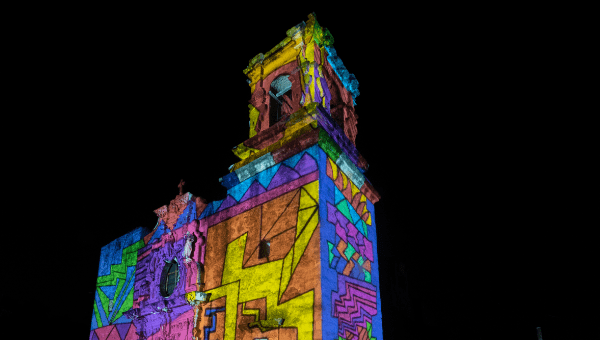What is a hybrid event — Really?
Learning what makes these integrated experiences work for events
We’ve heard the word hybrid over and over lately. But what does it really mean in the context of events?
The definition seems straightforward: A hybrid event is one that uses a combination of in-person and digital elements, tailored to each audience for optimal experiences.
But the reality is a little more complex than that. To create a hybrid event that helps your organization reach its goals, it’s important to understand what a hybrid event is not.
A hybrid event is not…
- A livestreamed in-person event
- An in-person event with a virtual bolt-on
- A virtual event with a regional happy hour
- A live event with on-demand content
- Concurrent events with different content and audiences
Each part of a hybrid event, whether in-person or virtual, is specifically designed and personalized for each audience to drive action and exploration. Your in-person audience gets the high-touch VIP experience that helps you drive leads, and your virtual audience can explore your content and create new connections, conveniently from the comfort of their home.
Fortunately, today’s technology makes it much easier to create a hybrid event that’s as impressive and engaging online as it is in the physical event space.
Leveraging traditional audio visual technology with virtual reality, on-demand content, and in-person media helps create opportunities for community, belonging, discovery, and conversation in any environment.
Hybrid bonus: These combo events offer new ways to hook your participants and connect them with your brand, while also collecting critical data. That’s amazing fuel for future event strategies to help you refine your approach and deliver more value to your audiences.
Hybrid events aren’t new
Have you ever cheered on your team in the Super Bowl or predicted who the Oscar goes to…during the Academy Awards? Then believe it or not, you’ve been a hybrid event attendee!
Yes, the in-person experience of a nail-biting sporting event or a glittering awards show is exciting and immersive. But even thousands of miles away, people are sharing the experience — having parties, engaging on social media, taking surveys and quizzes, entering contests, and generally feeling like they’re part of a community.
Now, that’s not to say that your hybrid event has to be on the same scale as the Super Bowl or the Oscars (your budget just breathed a sigh of relief, we’re guessing!), but it does demonstrate what’s possible when organizations take the time to ask, “How can we make this a great experience for remote participants? What will make them feel like they’re part of the event?”
Hybrid events are here to stay
While the current increased interest in hybrid events is due to travel restrictions, people will continue to have different appetites for meeting in person, whether it’s due to safety, schedules, or travel.
Or maybe they’re interested in your event, but not quite committed enough to take the time off work and book a flight. The great thing about a hybrid event is that it allows you to create a targeted experience for the industry VIPs who attend in person, while also allowing you to create an engaging, enticing experience for the folks who are still just getting to know you.
Essentially, a hybrid event allows you to grow your attendee pipeline, creating a low-effort, low-commitment way for people to get to know — and develop an interest in — your organization. For that reason alone, our industry needs to look at hybrid events not as a temporary solution to a pandemic, but as the possibility-rich future of events.
What do hybrid events look like in practice?
Hybrid events can work in any industry and for any event. Here are two recent examples:
- MPI – An association’s hybrid event that featured industry thought leaders sought to engage its two audience segments in different ways. They created an intimate, in-person experience for C-level decision-makers and influencers to hear presentations and participate in discussions directly. At the same time, they provided a live broadcast of the presentations and discussions with a behind-the-scenes “news desk” and on-demand content to provide content context for a less-essential, albeit important audience.
- AMD – A company planned a product launch event but wanted greater insights from their market. Those who couldn’t attend in person were sent a landing page link where they could complete a form to watch a livestream of the product launch. Not only did this greatly expand the overall event audience and create a fun, exclusive event for remote attendees, it also provided the company with a larger and more comprehensive set of data, allowing for better demographic conclusions.
So how do you know if hybrid events are right for you?
The best way to make this determination is to take a step back and think about your organization and how a hybrid event might look.
Start this exploration by asking some key questions to help you get to the heart of the hybrid matter:
- What is the objective for your event — in-person and virtually?
- Who is your audience (for in-person and virtual) and what do they need from this event?
- Will you include an exhibitor expo? What about a virtual exhibit hall?
- What about sponsorship opportunities for live sponsorships and ones that could work virtually or a combination of both?
By going through this exercise and talking to your teams about resources and risks, it’ll become clear what makes the most sense. And at the very least, you’ll know how to answer the “what is hybrid, anyway?” question when it comes up again!
Ready to set a higher bar with your design?



